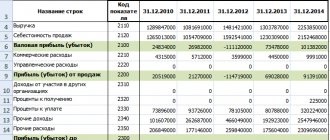Key components of the tariff system of remuneration
The tariff system is the most common payment model. She shares this:
- Time-based tariff system - the actual time worked by a person is taken into account.
- Piece-rate tariff system - it takes into account how much the employee produced (provided services).
The elements of this system include tariff indicators:
- Grid;
- Discharges;
- Odds;
- Rates;
- TKS.
The tariff schedule is a scale that connects categories with coefficients. For example, for state employees, tariffs for 18 categories are applied. The size of the tariff and earnings is influenced by the qualifications and complexity of the work. The calculation base is considered to be the first category rate. It sets the salary for the reporting period.
ETKS - unified tariff and qualification list and EKS - unified directory of administration positions were created for tariff classification and rank division of personnel. They describe what education and experience an employee should have, his knowledge, skills, and nature of work. Today, employers can use professional standards that meet the requirements of the labor market.
Payroll preparation
To determine the size of the salary using the specified method of calculating it, it is important to know the size of the tariff rate and the amount of time worked by the employee.
The calculation procedure depends on the specific type of tariff system.
Specific examples of wage calculation for each type of tariff form can be viewed by following the links in the table to the corresponding system.
Below is an example of a simple time-based wage.
Example
Initial data:
To pay the accountant of the company “Vasilek” Petrova O.V. a tariff rate has been established - each fully worked day is estimated at 2000 rubles.
In a month in which there were 22 working days, Petrova O.V. I only worked 18 days. The rest of the time she was on sick leave, as a result of which the employee must be paid 5,000 rubles. She was not awarded any bonuses during this time. An accountant works in a region where there are no regional coefficients that increase salaries.
Calculation:
Determine the amount of monthly income of Petrova O.V. for the billing month you can do the following:
18 x 2000 + 5000 = 41000.
In what cases is it used?
Tariff wages are in most cases used by large enterprises. The establishment of such a system is necessary to regulate the level of income of working citizens. In this case, it consists of a salary part and a bonus.
In companies where this methodology has been approved, a template must be developed on the basis of which the payment of funds will be carried out. The document may include information about the following salary elements:
- salary;
- allowances;
- awards.
How are tariffs set for paying employees?
Personnel performing basic operations are assigned category I. It increases with the growth of the worker’s professionalism.
The tariff rate is fixed by local acts of the organization, regulations, agreements, and collective agreements. The established payment system for work must fully comply with the Labor Code of the Russian Federation, and the established rates must comply with the norms of ETKS, EKS, professional standards, and also not contradict state guarantees.
According to Rostrud Letter No. 1111-6-1 dated April 27, 2011, official bodies recommend establishing equal salaries for positions of the same name in the state.
Work of equal value must be paid equally (Article 22 of the Labor Code of the Russian Federation). Other payments in excess of the tariff: allowances, incentives and others may vary for employees depending on the following points (Article 132 of the Labor Code of the Russian Federation):
- Qualifications;
- Difficulties of activity;
- Amount of labor costs;
- Quality of work.
Employee earnings also increase by the coefficients indicated in the table.
| District groups | coefficient |
| Far North: North-eastern districts Siberia (northern regions) European part (northern regions) | 1,6-2,0 1,4-1,8 1,4-1,5 |
| Areas equated to the regions of the Far North: Far East | 1,4-1,6 1,3-1,4 |
| South of the Far East and Eastern Siberia | 1,2-1,3 |
| European North (except the Far North) | 1,15-1,2 |
| Ural, south Western Siberia | 1,15 |
These coefficients are determined by government bodies by industry and separate areas of organizations.
Example #1. Payroll calculation according to the tariff system of remuneration
Accounting employee M.P. Chernygova earnings are calculated based on the daily tariff rate: 1,200 rubles/day. In addition, she is entitled to a bonus of 2,500 rubles per month. It operates in the Far East with a multiplying factor of 1.5. In August 2020, she worked 18 days out of 22 as scheduled, and was on sick leave for 4 days, the amount of which amounted to 4,054 rubles.
The employee’s earnings for August are equal to: ((1,200*18)+(2,500/22*18))*1.5+4,054=(21,600+2,045.45)*1.5+4,054= 39,522 ,18 rub.
Category of consumer baskets
The material-natural element of the minimum point of the consumer budget is created through a normative method, within the framework of the basis of the structure of the so-called consumer baskets. The consumer basket is a certain set of services and goods that are vitally necessary for a person:
- nutrition;
- shoes;
- cloth;
- items of cultural and everyday nature;
- elements in the field of sanitation and hygiene;
- Payment of utility services;
- medications;
- spending on household services;
- use and payment of transport.
Many people are interested in what it includes. The tariff system for remuneration of employees occurs in a manner determined by the availability of collective documents - contracts and agreements, depending on the degree of complexity and special labor conditions of these citizens, as well as their qualifications.
Time-based wage system
Earnings depend on the skill of the employee and the time he works. The system is implemented when labor is not standardized and it is difficult to take into account the number of actions performed by a person. Often time-based payments are used to pay administrative and management personnel (AUP), support and service personnel and part-time workers.
Earnings for simple time work are calculated by multiplying the rate by the time spent on work. If not the entire calculation period has been worked out, the interval actually worked is taken into account.
Salary = Hourly rate x Hours worked
In a similar way, you can calculate wages by day.
The bonus form, in addition to the time spent on work, implies taking into account the quality and quantity of duties performed. Based on this, the employee is entitled to a bonus: a fixed amount or a percentage of the base in accordance with the collective agreement, regulations and order.
Salary = Hourly rate x Hours worked + Bonus
Salary (option No. 2) = (Hourly rate x Volume of hours worked) * Bonus percentage
If the results of work are unsatisfactory, the employer has the right not to issue bonuses to the employee.
Example #2. Payroll calculation according to the temporary wage system
Employee of Mayak LLC, painter N.N. Vasiliev. The tariff rate assigned is 155 rubles/hour. In July of this year, he worked 176 hours (22 days * 8 hours). The organization provides bonuses for employees of this position in the amount of 3,500 rubles. monthly.
Vasiliev’s earnings for July 2020 will be: 155*176+3,500 = 30,780 rubles.
Nuances of the tariff system
We looked at what the tariff system of remuneration for workers includes.
Indicators calculated in accordance with a unified wage schedule for employees, which are established and directly regulated by law, represent an absolute guarantee of the provision of wages to employees of the relevant qualification field, who are financed from the budget and also benefit from government subsidies.
For employees in the production sector, the structure of the unified tariff schedule consists of twenty-three corresponding categories and has absolutely the same ratios of coefficients, which also apply to employees in the public sector. Heads of institutions are required to use state tariffs to properly differentiate wages for citizens as minimum guarantees for the amount of labor payments.
Piece rate form of remuneration
With this form of payment to staff depends on the final result of work, taking into account the quality of services provided or finished products. Such a system gives a person an incentive to increase productivity and ensure good quality of his work.
The amount of earnings is determined at piece rates per unit of production or operation. The transaction is practiced by organizations that can clearly record the quality and volume of goods produced or actions performed.
An organization can make payments for work results individually or collectively, for example, for a team of employees. Depending on the method of calculating wages, the transaction is divided into several types:
- Direct - at fixed prices;
- Premium - bonuses are applied for processing and on other grounds;
- Progressive - prices increase when production exceeds the norm;
- Indirect - earnings directly depend on the result of labor;
- Accord - a deadline and payment are established for the entire volume of work.
What is the tariff schedule by category?
This is one of the ways to calculate wages at an enterprise, which is formed on the basis of local or legislative acts; it determines the coefficient for multiplying the minimum wage depending on the qualifications of the specialist and other related ones.
When forming the tariff schedule, the following is taken into account:
- Intensity of workload;
- Harmfulness and danger of production;
- Length of working time and length of service of an employee in one position;
- Industry, since each type of production uses its own coefficients;
- Employee qualifications;
- Features of climatic conditions.
Important: the cost of an employee’s hour of work is always used as a basis in the tariff schedule.
The amount of work performed per shift can be taken into account, but it is subsequently still divided into the number of hours in a shift or working day. This leads to the calculation of the employee’s hourly rate in any production.
The differences between the tariff system and the grading system are discussed in this video:
Important: rates and increased salaries may not depend on categories. The tariff schedule is formed according to categories, usually 6 categories are used in its formation, this system is used mainly for budgetary institutions.
If the enterprise is engaged in production and is quite complex, a larger number of digits is used, up to 23, but the same coefficients are applied as in the public sector.
The salary of each employee depends on the coefficients used.
Application of tariff schedule in organizations
Remuneration for labor in production is formed in accordance with the legislation of Art. 143 – 145 of the Labor Code of the Russian Federation and when using tariff and qualification directories.
Labor Code of the Russian Federation Article 143. Tariff systems of remuneration
Tariff remuneration systems are remuneration systems based on a tariff system of differentiation of wages for workers of different categories. The tariff system for differentiating wages for workers of different categories includes: tariff rates, salaries (official salaries), tariff schedule and tariff coefficients. Tariff schedule is a set of tariff categories of work (professions, positions), determined depending on the complexity of the work and the requirements for the qualifications of workers using tariff coefficients. Tariff category is a value that reflects the complexity of work and the level of qualifications of the employee. Qualification category is a value that reflects the level of professional training of an employee. Tariffication of work - assignment of types of labor to tariff categories or qualification categories depending on the complexity of the work. The complexity of the work performed is determined based on their pricing. Tariffication of work and assignment of tariff categories to employees are carried out taking into account the unified tariff and qualification directory of works and professions of workers, the unified qualification directory of positions of managers, specialists and employees, or taking into account professional standards. These reference books and the procedure for their use are approved in the manner established by the Government of the Russian Federation. Tariff systems of remuneration are established by collective agreements, agreements, local regulations in accordance with labor legislation and other regulatory legal acts containing labor law standards. Tariff systems of remuneration are established taking into account the unified tariff and qualification directory of works and professions of workers, the unified qualification directory of positions of managers, specialists and employees or professional standards, as well as taking into account state guarantees for remuneration.
These directories are a list of activities and various professions that are available in enterprises and institutions. They fully contain the characteristics and qualifications, as well as the complexity of all types of professions. In addition, they indicate the requirements for the skills and experience of workers and determine their degree of responsibility.
Important: the directory is intended to determine and assign a rank to each employee.
Of course, at an enterprise, management has the right to develop its own tariff and qualification directory, taking into account the specifics of the organization’s activities.
Important: in this case, the guarantees and rights of the employee should not be infringed; in particular, work should not be paid below the minimum wage.
You can find out what the regional coefficient and the northern premium are and how they are calculated by following the link.
An example of a tariff schedule by category.
The labor evaluation process is established by order of the manager. In addition, all the nuances regarding tariffs can be specified in the collective agreement.
But with all these opportunities, employers of commercial enterprises try to adhere to government regulations, as this protects them from many problems with employees in controversial situations, regulatory authorities, during inspections and in other situations.
Unified tariff schedule for employees of budgetary organizations
Budgetary enterprises are required to use only directories developed by the state, since they use legalized salaries based on the example of the minimum wage, to which are added various allowances and other payments.
Important: if an employee has a decent amount of experience in this structure, then he has the right to receive increased bonuses and a high coefficient is used in calculating his salary.
At the moment, an industry tariff schedule is used, since its single version was canceled in 2007; according to this tariff schedule, each industry has its own base salary and coefficient.
Recommendations for improving the tariff system
This form is based on clear rates and takes into account ongoing circumstances. It is ideal for remuneration according to plan: for completing a specific amount of work.
It has some disadvantages. Employees who constantly receive official salaries do not strive to increase the intensity and efficiency of their work, or to make the production process more optimal and rational.
Additional financial compensation for employees is simply necessary. This will stimulate initiative and a creative approach to fulfilling your duties.
By paying raises and bonuses to employees who show the best results, the manager ultimately wins. Production begins to actively develop.
Compliance with several simple rules will have a positive impact on the economy of the organization, in terms of wages at the tariff:
- Arouse workers' interest in the wage system;
- Payment for identical work is equivalent;
- Divide rates not only depending on the skill of the staff, but also on the results, complexity, and intensity of the activity;
- Create interest in replenishing the workforce;
- Provide bonuses and salary increases to highly qualified specialists who show significant results for production;
- Raise prices for work performed above standards.
Advantages and disadvantages
The main advantages of the tariff system of remuneration include:
- no need to analyze the work done or prepare reports for each employee;
- speed of accrual - it is enough to know the employee’s coefficient and the amount of time worked;
- the ability to set a minimum salary.
The disadvantages include:
- lack of motivation to work, poor performance of job obligations;
- the need to pay wages in accordance with the employment contract, even if there is no money in the enterprise’s budget;
- a completely “white” salary increases taxes and contributions to the social fund.
The considered pros and cons of the tariff system concern employers. Working people benefit in many ways, often working at half strength and receiving a stable salary.
Tariffs in the budget
The wage system in the budget is established by a collective agreement, agreements, and other local acts. They must comply with the laws of the Russian Federation.
Payment in the budget until December 2008 was carried out according to the Unified Tariff Schedule. She acted on the basis of Resolution No. 785 of October 14, 1992.
| Pay grades | 1 | 2 | 3 | 4 | 5 | 6 | 7 | 8 | 9 |
| Tariff coefficients | 1,00 | 1,36 | 1,59 | 1,73 | 1,82 | 2,00 | 2,27 | 2,54 | 2,91 |
continuation:
| Pay grades | 10 | 11 | 12 | 13 | 14 | 15 | 16 | 17 | 18 |
| Tariff coefficients | 3,27 | 3,68 | 4,18 | 4,73 | 5,32 | 6,00 | 6,68 | 7,41 | 8,23 |
Each employee, according to the UTS, has his own pay ratio.
The salary (tariff) of the first category must be equal to or exceed the minimum wage (see → table of minimum wages by year). The maximum size of this indicator is unlimited and depends solely on the employer’s finances.
The rates for personnel of the highest ranks are equal to the product of the level 1 rate and the skill coefficient.
Now work is paid in a new way (NSOT), this is enshrined in Resolution No. 583 of 08/05/2008. The principle of payment to public sector employees is based on data from the ETKS and EKS, state guarantees, lists of additional payments and incentives.
The size of the rates is determined in a new way by the manager, taking into account the skill of the employee, the complexity and significance of his work. The amount of earnings excluding additional payments under the NSOT should not be lower than the indicators established in the UTS for similar work.
According to the recommendations of the Russian Federation Commission dated December 25, 2015, employees of identical professional levels and positions should earn the same.
Tariff schedule in the commercial sector
If it is difficult to create tariff coefficients for the unified tariff scale 2020 yourself, you can “borrow” samples from industry agreements for the period until 2020 - documents created by associations of specialized employers and approved by the relevant trade unions.
We recommend that you study the Industry Agreement for Ground Urban Electric Transport Workers: it takes into account all the features of remuneration for workers, and also provides a tariff schedule.
There are 13 skill levels for transport workers; tariff category of tram and trolleybus driver - 6th or 7th (depending on the length of the train); the highest coefficient for the 13th digit is 4.13, but there is a fork (from 3.90 to 4.13). By the way, this is also how the Decree of the Government of the Russian Federation dated December 10, 2016 No. 1339 is implemented, stating that the average salary of a manager can be no higher than eight times the average earnings of employees (relevant for state and municipal institutions).
An example of how a coefficient turns into a salary
An example of calculation for a tram driver in St. Petersburg.
Skill level - 5th. The odds range is 1.63–2.06.
Minimum wage in St. Petersburg (salary for 1st category) = 18,000.
Let's multiply the tariff rate of the 1st category (minimum wage) by the coefficient: we get the driver's salary: 29,340–37,080 (excluding allowances and compensations).
Additional payments in the tariff system
Additional payments are used to compensate the employee for any losses in salary caused by reasons beyond his control. Bonuses encourage workers to improve their professional qualities and skills.
Some above-tariff payments are fixed in the internal documents of the organization, while others are mandatory and guaranteed by law. For example, payments for an academic degree, northern payments, for movement along a mine shaft, etc. Additional payments can be established by agreement of the parties and enshrined in the employment agreement.
Additional payments can be divided as follows:
| Payment groups | Special nature of the work | Special working conditions |
| Types of surcharges and allowances | Weekends and holidays | Dangerous and harmful conditions |
| Shift work | Intensity of work on the conveyor | |
| Overtime work | Combination of professions, substitution | |
| Dividing a work shift into parts | Night work |
According to Art. 191 of the Labor Code of the Russian Federation, the employer has the right to independently establish the types of incentives for employees for the successes they have achieved. Additional payments are fixed in the collective agreement, charter, and regulations on discipline. Allowances for work are stimulating and depend on the business qualities of a particular employee.










